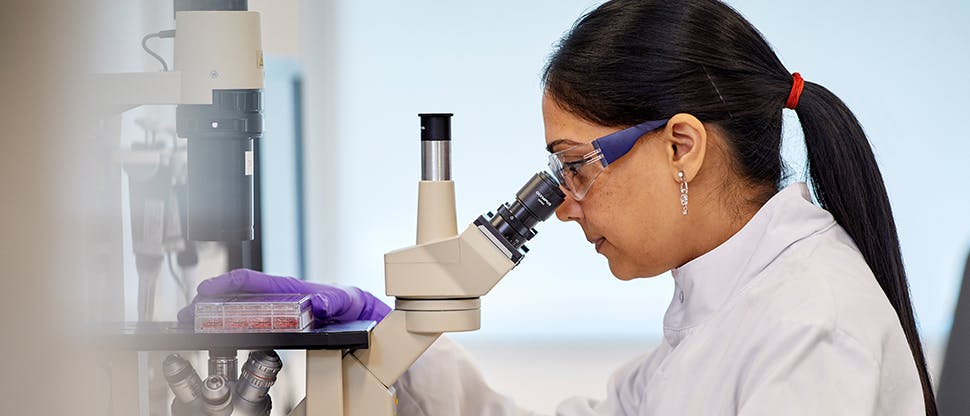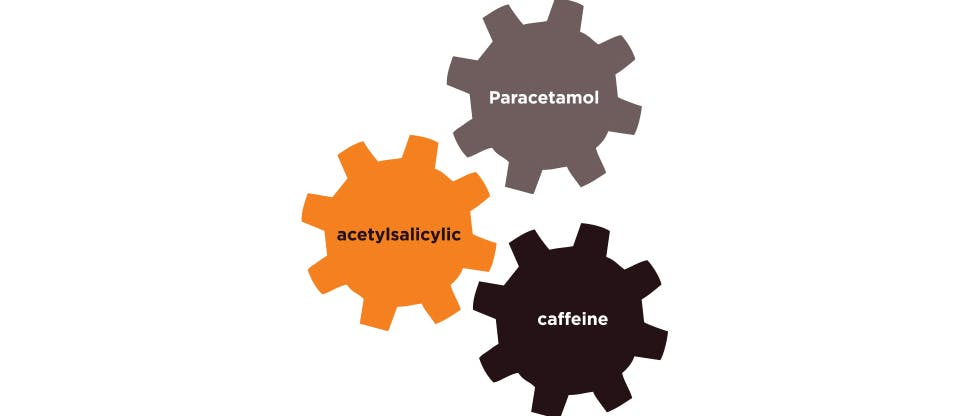Tension-type headache and migraine – management

How to manage tension-type headache and migraines
The management of tension-type headache (TTH) and migraines are similar. Each patient needs to be assessed to determine what it is they have, ruling out signs and symptoms that may indicate other more serious causes of the headache, treating the acute pain and counselling patients on how to avoid triggers.1
Treatment of the acute pain however, can differ depending on whether it is a TTH or migraine and, can include both non-pharmacological and pharmacological methods. Additionally, there are specific treatments for acute migraine attacks and preventive therapy.1
Management of tension-type headache and migraines

Non-pharmacological management for headaches 1,2
Some of these methods could help patients suffering from headaches find relief. Depending on the pain intensity, these might work alone or support better relief together with medications.
Consider recommending a headache diary to your patient This will help them track triggers and also the types of medicines they are on and, how effective they are |
| Advice rest in a dark and quiet room |
| Sleeping can help, if possible |
| Apply a cold compress to the head |
| Learning stress management skills |
| Adjusting lifestyle such as reducing caffeine intake, ensuring regular exercise and avoiding irregular or inadequate sleep |

Pharmacological management for headaches 1-3
For treating acute attacks:
| TTH |
Migraines |
| Mild-TTH may not require treatment |
Mild-to-moderate migraines can be treated with adequate doses of analgesics like paracetamol or NSAIDs |
| Moderate-to-severe TTH can be treated with appropriate doses of analgesics such as paracetamol or non-steroidal anti-inflammatory drugs (NSAIDs) like ibuprofen or naproxen sodium |
Severe migraines may require more migraine specific drugs like triptans or ergot alkaloids If the migraine has associated symptoms such as nausea and/or vomiting, add supporting drugs like antiemetics (metoclopramide or domperidone) |
Preventive treatment for TTH is usually non-pharmacological However, if the patient suffers from severe or chronic TTH, drugs such as amitriptyline or mirtazapine may be considered |
Preventive treatment for migraines are mostly prescription drugs: - First choice drugs like beta-blockers (propranolol and metoprolol), flunarizine, valproic acid and topiramate - Second choice includes amitriptyline, naproxen, petasites extract and bisoprolol |
Remember to determine if your patients are able to take these medications prior to recommending them. Consider if they have comorbidities such as chronic kidney disease, liver disease, peptic ulcer disease and cardiovascular disease and, if they are on any medications that may interact with treatment for the headache.

New dimension for treatment of acute migraine5-12
The powerful triple action of paracetamol, acetylsalicylic acid (aspirin) and caffeine has been shown to work together to help combat migraine4,5 and, was more effective than ibuprofen 400 mg.6
Each component counteracts mechanisms of migraine:
| Component |
Action |
| Aspirin7,8 |
An analgesic and anti-inflammatory, that also has anti-pyretic activities Irreversibly deactivates cyclooxygenase (COX) isoenzymes in the peripheral nervous system |
| Paracetamol9 |
Known for its anti-pyretic effect, it is also an analgesic Prevents synthesis of prostaglandins primarily within the brain |
| Caffeine10,11 | Enhances analgesic effects of paracetamol and aspirin Allows lower doses of paracetamol and aspirin to be used compared with therapeutic monotherapy doses |
This triple combination is not only one of the widely used over-the-counter medications for acute migraine attacks but also the first over-the counter product approved by the United States Food and Drug Administration (USFDA) for the treatment of migraines and, is recommended as first-line treatment.6,12
Understanding headaches and migraines
Headaches & migraine overview
Find out more about how headaches and migraines impact people’s life.
Learn about the causes and triggers
Discover the causes and triggers for the more common types of primary headache disorders – tension type headache and migraines
How do they present?
Find out the signs and symptoms of tension-type headache and migraine. Learn to differentiate them and learn about “red flag” symptoms that indicate a referral to a doctor.
Learn more
Panadol Migraine
A powerful over-the counter triple action analgesic containing paracetamol, acetylsalicylic acid (aspirin) and caffeine that targets major symptoms (e.g. photophobia, phonophobia, nausea and pain) of migraine with or without aura.4
Panadol Extra
With a dual formulation that fights tough pain such as headaches,13,14 migraines,15 dental pain16and menstrual pain.17
Request Samples
Provide your patients with a product sample when you make your expert recommendation to encourage them to make changes for better oral health and pain relief.